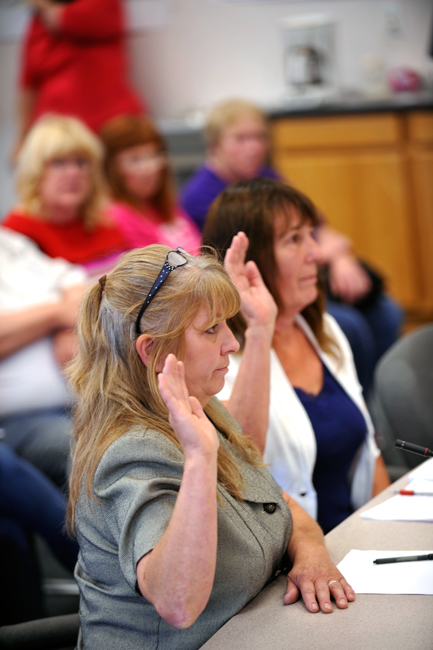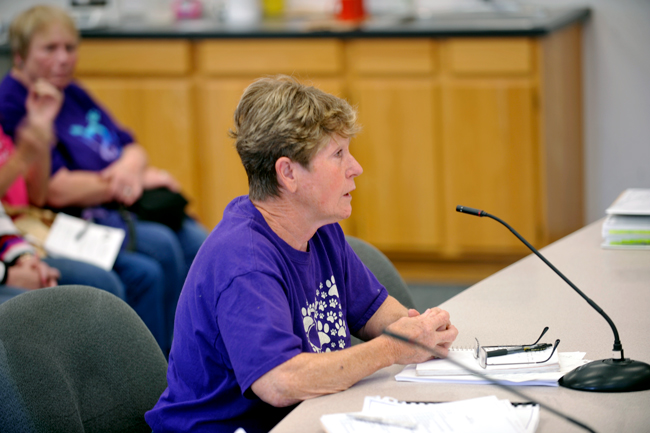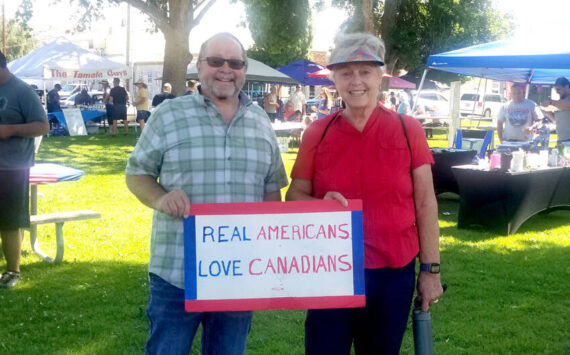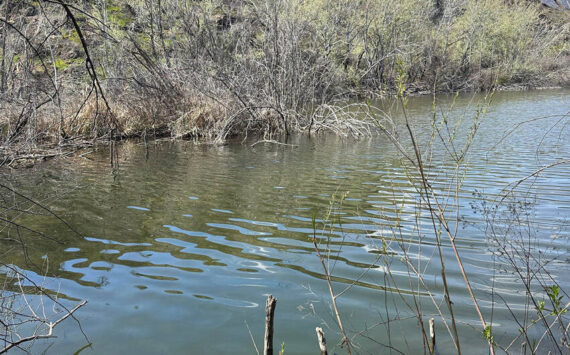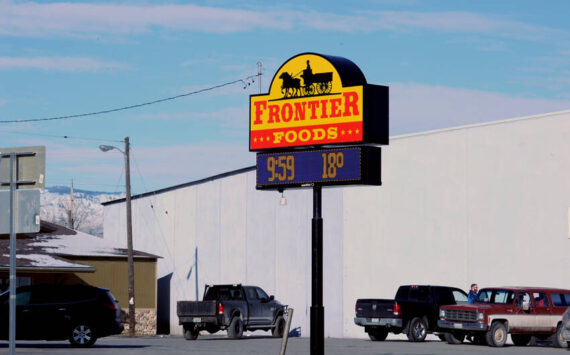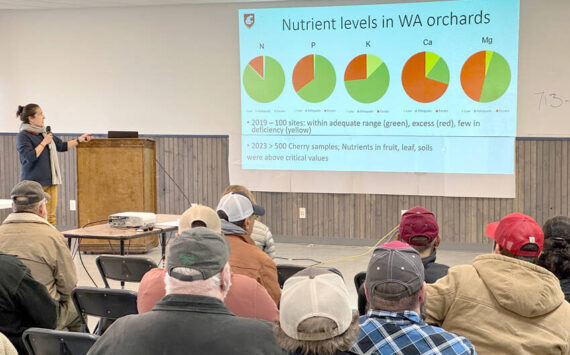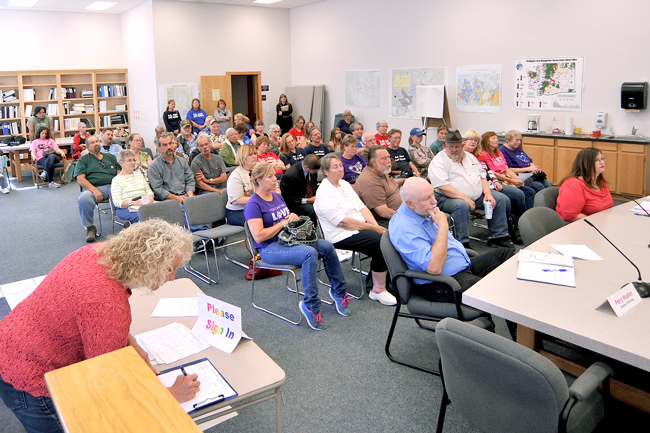
Opponents appeal SEPA DNS; promotes seek CUP for kennel
OKANOGAN – It was standing room only in the Okanogan County Commissioners’ board room last Thursday as proponents and opponents met to give testimony on whether an Oroville area animal shelter should be granted a Conditional Use Permit (CUP).
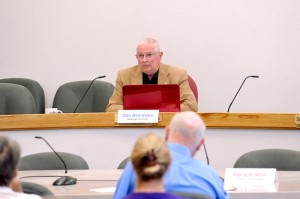
The hearing was both an appeal of the SEPA (State Environmental Protection Act) and whether the application by NO Paws Left Behind merited a Conditional Use Permit, according to Dan Beardslee, the hearings examiner.
“Any appeal of my decision would be based on our record here, once the record is closed I have 10 days to make my decision,” said Beardslee.
Perry Huston, Okanogan County Director of Planning, is the administrator of the county code involved in whether a SEPA and CUP are warranted.
Huston first discussed the appeal of the Determination of Non-significance regarding the SEPA and summarized the staff report.
“The purpose of the SEPA process provides a backdrop, a process where certain environmental concerns are considered. This is not a permit,” said Huston. “It was determined that there would be no likely significant impact or condition (regarding the animal shelter).
Huston said a kennel is a very different business in Okanogan County and presented a different scenario than a typical CUP. He said any impacts are identified during the SEPA process. These include noise, visual and other potential impacts, according to Huston.
“The Conditional Use Permit provides conditions to mitigate those impacts. Although there are a great deal of disagreement on how to deal with those impacts,” said Huston
He added that it was the recommendation of county staff that the appeal of the SEPA be denied and the Determination of Non-significance stand.
“Regarding the burial of animal waste, I thought I saw a report where the Department of Ecology said the burial of animal waste was not permitted,” said Beardslee.
Huston said he was unable to find such a regulation and that the Okanogan County Public Health Department was the authority in the matter “and they had no conflict.” Huston went on to say that Public Health was under contract to Ecology and the state Health Department.
“Could it be Ecology has their own recommendations and Okanogan County Public Health is applying their own regulations?” asked Beardslee.
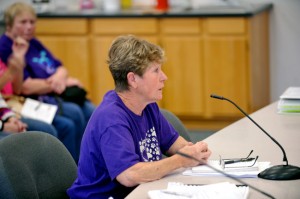
Planning staff discussed the application by Carol Richards for a kennel permit for up to 75 dogs. Okanogan County Code lays out the conditions for a kennel permit. Beardslee was asked if he had any specific questions for staff and Beardslee opened the meeting up to public comments, combiningg the testimony session for both the appeal of the SEPA and the CUP.
The testimony began with Carol Richards, the applicant and Harry Anulma, who was representing her during the hearing.
“For the last two and a half years I have been taking in dogs that are ill or needed help. It all started to mushroom so I started an animal rescue. I was unaware I needed a permit, but as soon as it was brought to my attention I applied,” said Richards.
She said she thought that the noise, water usage and pollution questions had all been covered in her application.
“I also checked into getting the road covered with a substance that is an environmentally-friendly, green product and is certified organic to keep the dust down. As far as noise the dogs are put inside and we exceed the number of hours that they need to be kept quiet according to county regulations,” she said. “Water usage… it is supposed to be up to 5000 gallons a day and we have never even approached that… perhaps 75 gallons.”
Richard said that a light she had installed to keep coyotes away was changed when the neighbors complained about it shining on their home.
Beardlee asked about the animal waste being generated by the dogs and how it was disposed of. She said the collected waste from the dogs at the shelter filled a small four foot by one foot by two foot trailer about every week to 10 days. She added that the kennels were covered with straw and shavings as well.
When Beardslee asked how the waste was disposed of Richards said it was placed in a ten foot deep trench and covered by dirt after each layer was added.
“It has never gotten full. The health department has been there three times and checked what we have and we’ve passed each time,” she said.
There was some question of the shelter being advertised as a non-profit in regards to the Conditional Use Permit.
“She doesn’t have a non-profit and this has no bearing on the CUP. She is a sole operator and nothing prevents her from soliciting donations. Whether she is a 501C3 or a sole operator is not an issue,” sai Anulma.
The question was asked whether Richards planned to take in large animals like cattle.
“At this point I have no plans to expand,” she replied. “I may need to add buildings, but I never had plans to have more than 75 dog. I have a letter from the Humane Society that says they will take any dogs over 75.”
Anulma went through several of the objections from the appellants to the SEPA. These included an objection to taking in dogs from Canada, water use, the noise of barking dogs, dust, slope of her property and not having a commercial easement to the property. He said the application does not say where or where not the dogs come from.
“There are two types of easements to property. What she has is an easement for herself and for those who are traveling to and from her residence. If the easement did not allow for things like high traffic then that has to be done when granted,” he said.
“The Hearings Examiner has no right to decide private property matters, that is for Superior Court,” said Beardslee, who made the statement several times during the hearing. “That is not my business nor do I have the authority to do that.”
The property is a natural amphitheater, according to Anulma, who said that they used a sound meter to measure the noise made by the dogs. He said her property was well within limits as regulated by state law and that the noise from Highway 97 was louder.
“Rather than just measure the noise at random we had Ms. Richards rile them up,” he said.
Beardslee asked if he had training in the meters use, whether he was an expert in using sound meters and whether he could guarantee that the meter was properly calibrated.
The lawyer admitted he was not an expert and used the new meter exactly as it came out of the box assuming it was calibrated correctly.
There was also the issue about whether a culvert that Richards had installed on her property was causing run-off from the kennels to one of the wells on the neighbors’ property.
“There is an allegation that she built a culvert to direct water and feces to the appellants well,” said the lawyer. “Once again there is no evidence of this.”
Richards said the culvert was placed in the natural drainage which has been there for “thousands of years.”
“I put in the culvert so I could get to another piece of the property,” she said.
Richards and Anulma said the dust could not be blamed on high used of the road, pointing to the nearby gravel pit, the highway and a recycling center as potential sources.
Patricia Thomas, a biologist was next to be sworn in.
She said, “Regarding the animal waste, Ecology only regulates agricultural disposal, smaller amounts are usually left to the local health agency to regulate and are delegated to the Health Department.”
Several other people testified in support of NO PAWS, while others took the side of the Ellis family.
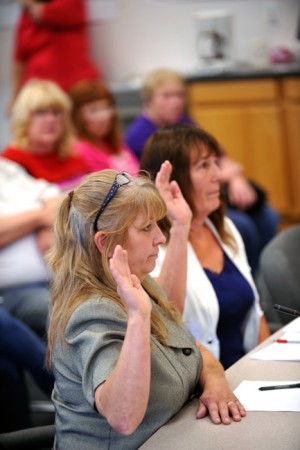
Jan Ellis said she spoke for the Ellis family and gave the Hearings Examiner a long list of objections to the SEPA and granting a Conditional Use Permit.
“There have been multiple violations of the cease and dissist order, requiring a second cease and disist,” she said. “They also violated the posting requirement. It was supposed to be posted at the post office by June 13.”
She said she had no evidence of sound proofing of the buildings or of sight obscuring fencing or landscaping.
“The Health Department has also investigated the wrong well and feces pit,” she claimed. “They investigated Ms. Richard’s well rather than the neighbor’s well, which had a pit located within 100 feet.”
Ellis also said the family placed game cameras on the road and as many as 690 cars in the last three months had travelled on it, excluding the cars of family members and those visiting the Ellis property.
“That’s unacceptable on a private road on which she has an easement,” she said.
She also described people who would park on the speed bumps and spin their tires in an effort to remove them.
“Then it is up to 68-year-old Richard Ellis to do the repairs,” she said, adding that he had also had to rescue someone who had driven off the road because of snow.
“Richard and Mary feel they are not safe on their own property. Rich has had to go to the doctor for health issues. Mary has had to increase her asthma medicine because of the stress and dust,” she said.
Ellis also said the gravel pit was only worked two days a year and the recycling center had been closed for months so they were unlikely causes of the added dust.
“This is an inappropriate land use, dog feces disposal, threats of lawsuits, especially when there is a viable alternative with the OPETs shelter,” she said. “The only thing I’ve read is there is a need and Ms. Richards is good at it. I ask you to make two site visits, one announced and one unannounced before you make your decision.
Several people testified and some gave written comments. Beardsley agreed to make a site visit and said he would not make a decision until 10 days after he closed the record. Written comments will be taken until that time, he said.
